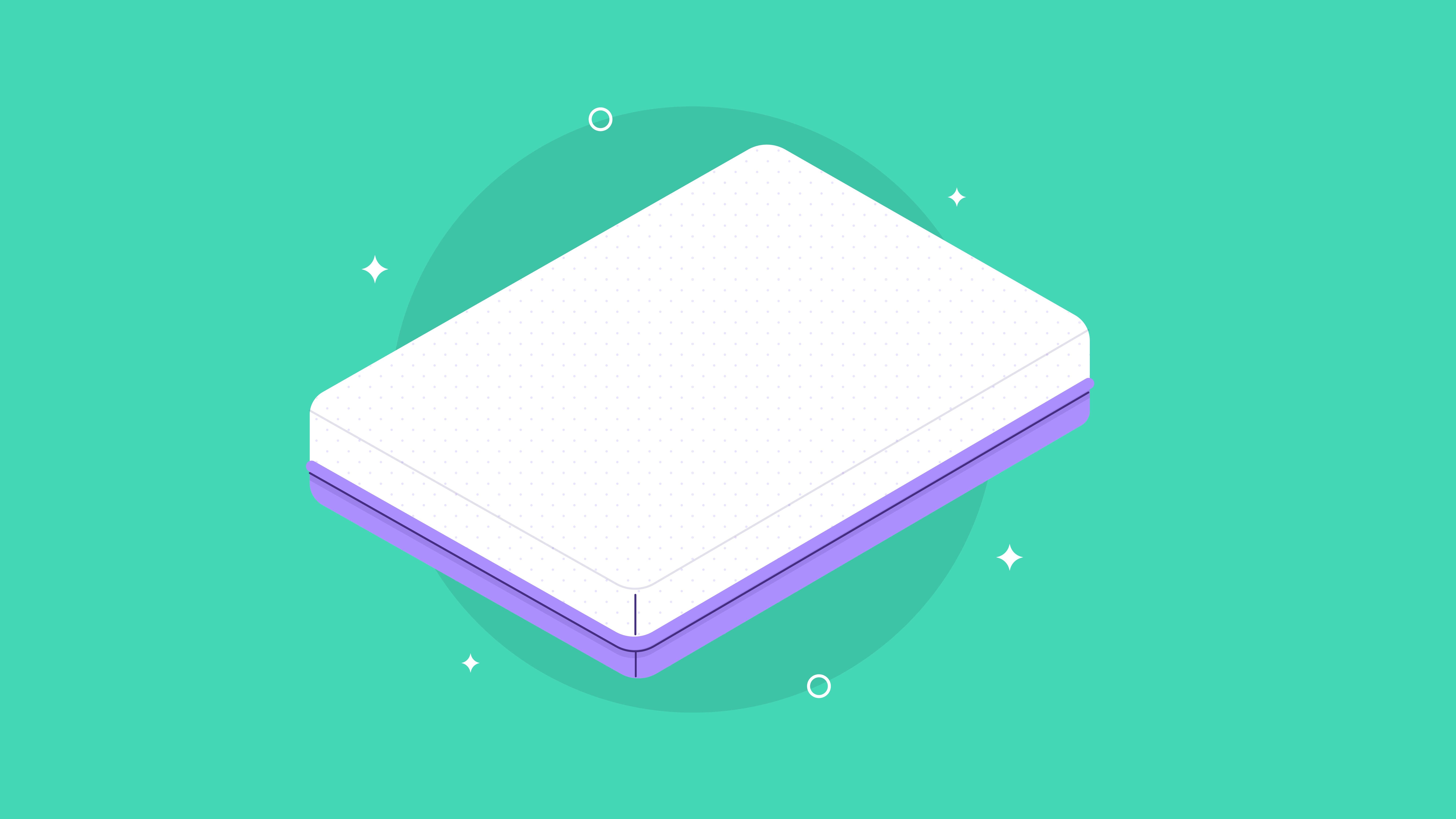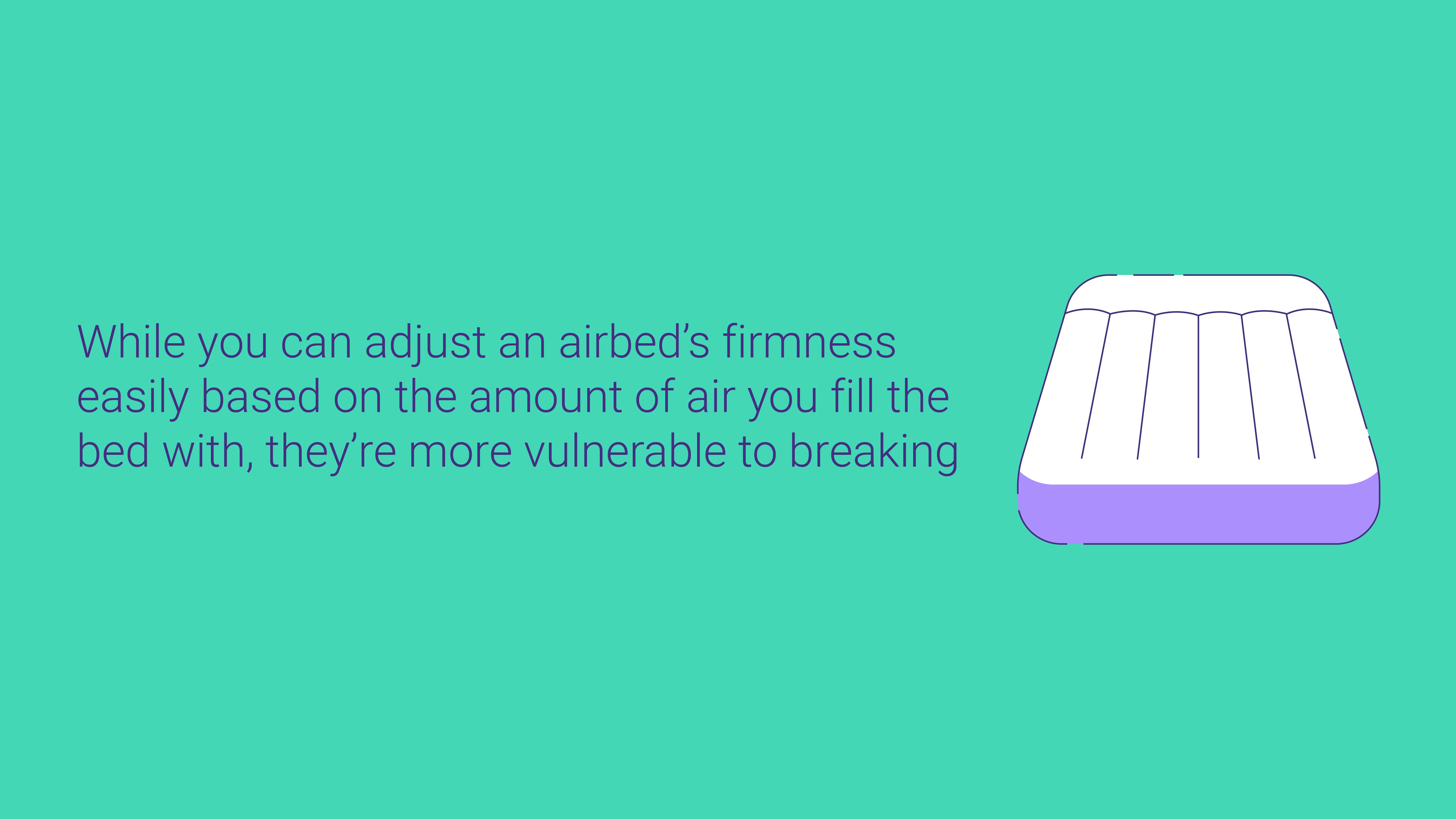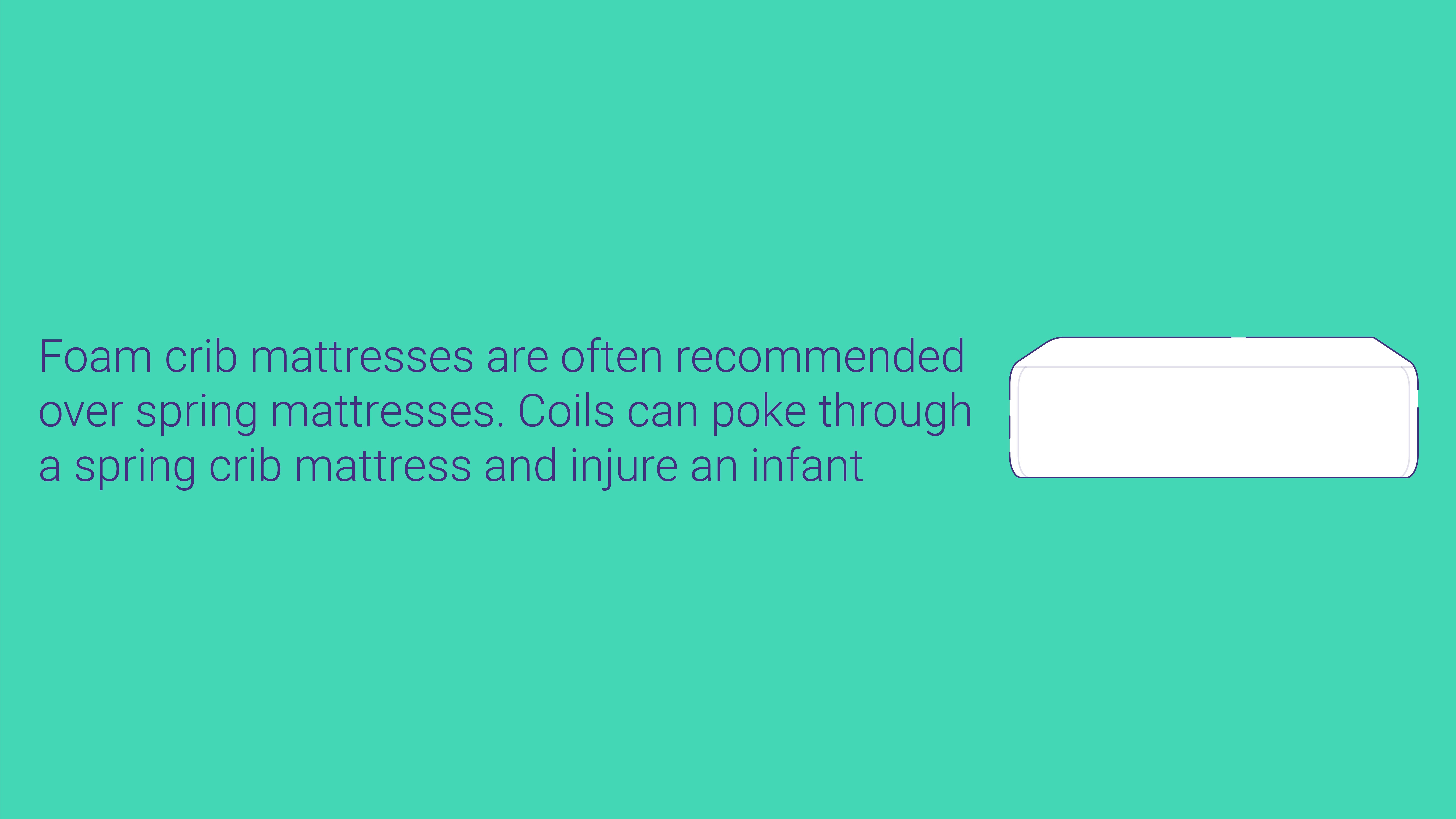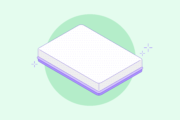
How to Choose a Mattress

- The key difference between a king and a split king mattress lies in their construction. King mattresses are a single unit, whereas split kings consist of two beds pushed together. Despite sharing the same dimensions and price, their distinct structures cater to diverse needs.
- King mattresses are optimal for couples sharing a bed with similar firmness preferences, providing generous space for a comfortable sleep experience. Suitable for co-sleeping families and large master bedrooms, king beds also offer compatibility with adjustable frames.
- Tailored for couples with differing firmness preferences, split king mattresses allow each person to select a mattress that suits their individual needs. These mattresses address concerns such as motion transfer and are compatible with split adjustable bed frames, providing personalized comfort for each sleeper.
Most people agree that a good mattress correlates to good sleep, but finding a good mattress isn’t always easy. Finding the right mattress can seem overwhelming and difficult, especially with the countless options out there. It’s intimidating trying to find a new bed, to the point where many of us delay getting a new bed entirely.
But, we make mattress shopping easier.
Our tips help you figure out issues including when it’s time to switch out your bed, what your wants and needs are from a bed, how much to spend, and what type of bed is best suited for you. With these factors in mind, narrowing down your options is simple and you no longer have to feel intimidated by mattress shopping. Let’s take a look!
1. Shopping Online vs. In-Store
When it comes to buying a mattress, there are two main ways to shop. You can shop through a brick-and-mortar store or online. While many of us assume shopping in-store is the best way to go, it’s not as great as you may think.
Yes, you can feel and lay on actual mattresses in a brick-and-mortar store. However, it’s not the same as sleeping on a bed for months and months. Besides, most display mattresses have been laid on by hundreds of people, so the bed you see in-store won’t feel the same as the one in your home.
Shopping online gives you access to countless mattresses at your fingertips. There’s no need to drive from store to store and you won’t have to talk to salespeople all day. Plus, lots of online retailers offer generous sleep trial periods and more affordable prices than brick-and-mortar mattress stores.
The main issue with online shopping is you can’t feel or see the mattress before making a purchase. The sleep trials partially make up for this. However, it can still be hard for some of us to make a big purchase before seeing the item. That’s why it’s great to buy from a brand you trust.
Let’s take a brief look at some of our favorite mattresses sold online today:
- Best Online Mattress: Amerisleep – Amerisleep’s most popular model, the AS3, combines plant-based memory foam, a bouncy transition layer, and durable poly-foam for a cool and comfortable night’s sleep. With its medium feel, the AS3 is great for side and combo sleepers, along with couples. Amerisleep AS3, starting from $1149 (was $1149)
- Best Cooling Online Mattress: Zoma – With gel memory foam, zoned technology, and transition foam built to keep you lifted, the Zoma Mattress is there to help you sleep deeper and wake up pain-free. Zoma Mattress, starting from $499 (was $649)
- Best Budget Online Mattress: Vaya – Built to be affordable, Vaya’s flagship mattress, the Vaya Mattress, is eco-friendly, cool, and durable. It’s great for a wide variety of sleeping positions, so everyone can enjoy a good mattress for a great price. Vaya Mattress, starting from $349 (was $649)
2. Determine if it’s Time to Replace Your Mattress
Before you even start your hunt for a mattress, look at your current bed and decide whether it’s even time to replace it. Mattresses are a big investment, so not all of us can replace them on a whim.
If your mattress meets the following criteria, it may be time for a replacement:
- Your mattress is over 7 to 10 years old
- Your mattress has visible sags, lumps, or indentations
- You struggle to get comfortable at night
- You wake up feeling fatigued or achy
- You sleep better on different beds
Whether your mattress is too old or not the right style for you, if you are simply unable to get comfortable on your current bed, it’s probably time to switch it for something better suited for you.
3. Decide What You Want From a Mattress
When looking for a new mattress, it’s worth making a list of what you want and don’t want from your next mattress. This will help you narrow down your options so you don’t get overwhelmed by the countless mattress options on the market today.
Try asking yourself the following questions:
- What do I like about my current mattress?
- What do I dislike about my current mattress?
- Is the mattress for me or someone else?
- What must my next mattress have?
- Do I need to buy any accessories (pillows, blankets, foundations, or bed frames) for my mattress?
4. Find Your Preferred Mattress Type
One of the next things to decide in your hunt for a mattress is what type of bed you want! Different types of mattresses are unique in terms of feel, price, and durability, so knowing what mattress type you prefer makes finding a bed much easier.
Memory Foam
Memory foam is popular for providing immense comfort and pressure relief to sleepers. If you struggle with chronic pain or simply want to feel cradled by your bed, a memory foam mattress may be right for you.
While memory foam beds are readily available and come in a wide range of prices, a common complaint is that memory foam can get hot and cause you to feel stuck in bed. However, many brands have worked around these issues by infusing their beds with plant-based oils, gel, graphite, or copper. This way, you won’t have to worry about feeling trapped or overly hot in your bed.
Latex
Latex is an eco-friendly foam derived from the sap of rubber trees. The material is known for naturally being cool, bouncy, and durable. While latex foam is pressure-relieving, it may not offer the same hug-like feel you’d expect from memory foam. Of course, this is beneficial for some people.
Since latex beds are natural and sustainable, they tend to be on the pricier end of things, costing between $1000 to $2500 for a queen bed. However, latex mattresses typically last the longest compared to other types of beds, with a lifespan of around 12 to 15 years. While the initial investment of a latex bed is higher than other beds, you won’t have to replace it so soon.
Innerspring
Innerspring mattresses are one of the most common and well-known types of beds out there. They contain metal coils and a comfort layer typically made from cotton, down, wool, or polyester.
Some innerspring beds feature thick pillow tops or Euro tops in the place of thin, flimsy comfort layers. Pillow tops are sewn over the mattress while Euro tops are sewn under a mattress’s cover, making them flush with the mattress. Pillow tops are more prone to coming out of place compared to Euro tops.
The primary issue with innerspring beds is that they’re uncomfortable and wear down rapidly. The coils squeak and break, while the pillow or Euro tops are prone to wear, growing lumps, and shifting in place. Overall, there are better mattresses than innerspring. Still, if it sounds interesting, we recommend reading our innerspring mattress buying guide to ensure you choose the right one for you.
Hybrid
Hybrid mattresses aim to offer the benefits of both innerspring and foam mattresses. They feature a coil support coil and foam comfort layers, often made from latex or memory foam. They’re known for being breathable and bouncy, but still pressure-relieving and comfortable to sleep on.
Unlike innerspring pillow tops, the foam comfort layers on hybrid beds provide immense pressure relief and comfort. The coils in hybrid mattresses are independent of each other and wrapped in fabric. This way, the coils support your body closely, won’t squeak, and are less likely to break than non-pocketed coils.
The main drawback to a hybrid mattress is its price tag. Hybrid and latex mattresses are both expensive types of mattresses because of their production costs.
Airbed

Airbeds are quite literally mattresses filled with air. Now, not all airbeds are cheap, plastic bags you take while camping. Some airbeds feature foam layers and can be mistaken for any old mattress. Still, they’re not the best types of beds.
While you can adjust an airbed’s firmness easily based on the amount of air you fill the bed with, they’re more vulnerable to breaking compared to other types of beds. Their lack of durability makes them unsuitable for long-term usage, so it’s best to keep airbeds for the occasional guest or camping trip.
5. Figure Out What Mattress Firmness You Need
Beyond choosing the type of mattress you want, decide what mattress firmness is best for you. Mattress firmness affects how much cushioning, or give, your mattress has. An overly firm or soft bed can lead to pain, stiffness, and difficulty sleeping.
The main factors to consider when determining what firmness establishes the most comfortable mattress for you are your sleeping position and size.
Sleeping Position
When it comes to choosing a mattress firmness, your sleeping position makes the biggest impact on what firmness is right for your body. Your sleep position determines how much support and cushioning you’ll need at night to feel comfortable and wake up pain-free.
Back sleepers are often most comfortable on medium-firm or firm mattresses. The firmer mattresses for back sleeping promote spinal alignment without causing uncomfortable strain on the lower back.
Side sleepers need the softest beds compared to other sleeping positions. Typically, they are most comfortable on soft to medium mattresses as they provide enough cushioning for the hips and shoulders, the widest parts of the body.
It’s best to use a firm mattress for stomach sleeping. This way, your hips don’t sink and throw your spine out of alignment, which would lead to pain and discomfort.
Of course, not all of us stay rigid in one position all night. Combination sleepers should generally consider medium mattresses as they’re best suited for various sleeping positions. Even then, firmness is subjective. Say you only ever switch between back and stomach sleeping, a medium-firm or firm mattress would likely be better than a medium mattress.
Body Type
Next to your sleeping position, your body type plays the next most important role in what mattress firmness you need. The standard mattress firmness recommendations are based on the average-sized adult who weighs between 130 to 230 pounds. If you weigh more or less than this, you’ll have to adjust your firmness needs accordingly.
If you weigh less than 130 pounds, we recommend choosing a mattress firmness softer than what’s recommended for your sleeping position. For instance, if you’re a back sleeper, choose a medium mattress over a medium-firm mattress.
Conversely, for people who weigh more than 230 pounds, we suggest going for a mattress firmer than the standard recommendation for your sleeping position. So, if you tend to sleep on your side, a medium-firm mattress will likely suit you better than a medium or medium-soft mattress.
6. Choose What Mattress Size is Best For You
One of the biggest parts of getting a mattress is choosing the right mattress size. It’s a rather straightforward process, but it’s still important to consider:
- How much sleep space you’ll need
- Whether you share a bed
- How big your bedroom is
Plus, the mattress size you choose impacts how much the beds cost.
Twin
Twin beds are the smallest standard mattress size on the market, being 38 inches wide and 75 inches long. A bedroom should be no smaller than 9 by 9 feet to fit a twin bed and other bedroom furniture while also ensuring there’s space for you to walk around.
A twin mattress is perfect for a child’s first “big kid bed,” teens, or students living in a dorm. Many young adults may choose a twin mattress to save money. However, if you’re a taller person or like to stretch out, a twin bed may be uncomfortable long-term.
Twin XL
Twin XL mattresses are 38 inches wide and 80 inches long, or 5 inches longer than standard twin mattresses. Your room should be at least 9 by 10 feet to suit a twin XL mattress.
Twin XL mattresses are common for studio apartments, rental homes, dorms, and bunk beds because they fit in compact places, but are long enough to suit most sleepers. Some people also keep a twin XL bed around for guests.
Not only that, but twin XL beds are bunk bed compatible, so you can stack two mattresses if needed. Two twin XL mattresses also form a king size bed.
Full (Double)
Full mattresses are 54 inches wide and 75 inches long, making them 16 inches wider than twin mattresses. Although full beds are wider than twins, they’re still too narrow for two people to sleep on comfortably. Rather, full beds are best for single sleepers who want to stretch out, but perhaps don’t have space or budget for a queen bed.
Parents who want to give an older child plenty of sprawling space and room for growth spurts may want to choose a full as a mattress for their teenager.
Queen
Queen beds are the most popular mattress size amongst adults, both single and not. A queen mattress measures 60 inches wide and 80 inches long, making it long enough to suit most adults.
A nice aspect about queen mattresses is that most master bedrooms are large enough to fit queen beds since they’re so common. For reference, a bedroom should be no less than 10 by 10 feet to fit a queen size mattress.
King
King mattresses measure 76 inches wide by 80 inches long and are a great option for couples. While single adults can use a king bed if you choose, it’s unlikely you’ll be able to use up all the space in the bed.
Although king beds are one of the pricier mattresses due to their size, the extra room couples have to themselves at night often makes up for it. However, be sure your room is big enough to accommodate the big mattress since, even if you have the budget for a large mattress, it won’t work in a small room. Ideally, your room should be at least 12 by 12 feet large for a king bed.
California King
California king mattresses are 72 inches wide and 84 inches long. A common misconception with buyers is that California king mattresses are the largest standard mattress size, but this isn’t true. While Cal kings are the longest standard bed, they have a smaller total surface area than standard kings.
Cal king mattresses are a great choice for tall adults and couples, and for people who have a long and narrow bedroom. Your room should be at least 11 feet wide and 12 feet long for a Cal king bed.
7. Is the Bed For a Child?
Mattress shopping for yourself is one thing, but finding a bed for a child is a whole different story. Still, buying a good mattress for a child doesn’t have to be difficult.
Twin mattresses are the most common mattress size for children, especially if it’s their first “big kid bed.” However, twin XL and full mattresses are a good option if you want the mattress to last well into your child’s teen years. After all, mattresses last 7 to 10 years on average. A bigger mattress can better accommodate a child’s final growth spurt.

Infants and toddlers still in their cribs should use firm crib mattresses. This way, they don’t sink into their bed, which can potentially be hazardous.
Foam crib mattresses are often recommended over spring mattresses. Coils can poke through a spring crib mattress and injure an infant.
For toddlers transitioning out of their cribs into an actual bed, firmer beds are ideal to minimize sinkage. As your child ages, it’s better to choose mattresses based on their sleeping position, as you would for yourself.
There’s no specific mattress type best for children. We do suggest looking for mattresses with more eco-friendly materials that are free of chemicals such as formaldehyde or VOCs. This way, your child isn’t exposed to anything potentially harmful.
Other considerations when getting a mattress for your child include:
- Getting a durable and waterproof mattress protector
- Finding the right pillows
- Using bed sheets that are easy to maintain and wash
8. Stick to a Budget
Choosing a budget is one of the most important decisions to make before investing in a mattress. Good mattresses aren’t cheap, but once you’ve determined how much you’re willing to spend, you can narrow down your options and find the best bed within your price range.
For a queen size mattress, you can expect to pay between $500 to $1500 for a high-quality, long-lasting bed. You can find beds for both more or less than this estimate. However, a more expensive price doesn’t always mean better quality. Conversely, overly cheap beds are still more likely to be uncomfortable and not last long.
If you have an especially tight budget, we recommend checking out online mattresses over what you find in brick and mortar stores. Brick and mortar mattress stores have more overhead costs than online mattress stores, which leads to the mattresses costing more. Conversely, online mattress stores can keep costs low, so they have low prices and offer discounts and bundles regularly.
It can be tempting to buy a used mattress on a budget, but we strongly recommend against doing so. Used mattresses come with too many uncertainties to justify purchasing one.
9. Compare Mattresses and Read Product Specifications
Well-known brands and fancy words may sound appealing as you shop. However, you should always be sure to read the details of a mattress and its construction rather than choose a mattress for its name. The mattress’s materials can give you good insight as to:
- How well the mattress will feel
- How long it will last
- Whether it’s worth the price
Look at the thickness of each mattress layer, the type of materials used, and the mattress cover fabric. Most product landing pages give detailed descriptions of all the materials in their mattresses and how they work, so it shouldn’t be hard to get an overview of what’s in a bed. However, knowing all the details makes it easier to compare mattresses.
The overall mattress thickness is also important to consider. For maximum durability, we almost never recommend a bed under 10 inches for sleepers, although 8 or 9 inches can do in a pinch for budget shoppers.
With that, see if the mattress has any quality certifications by third-party organizations such as CertiPUR-US®, OEKO-TEX®, or Global Organic Latex Standard (GOLS). These types of organizations rate a mattress’s sustainability, chemicals, and whether or not it’s organic. While third-party certifications aren’t the only way to find a good mattress, they’re still useful.
10. Read Customer Reviews (Good and Bad!)
Although professional reviews and articles can be useful when it comes to learning a mattress’s specs and details, customer reviews are especially important for understanding how a bed performs long-term. According to a 2020 survey, roughly 79-percent of people trust online reviews as much as they trust word-of-mouth reviews from friends and family.
Reading customer reviews are advantageous because they’re unbiased and provide realistic descriptions of how a product performs. Customers might mention what type of bed they had before and how their new bed compares, what they liked and disliked about the bed, and if and how the bed improved their sleep or physical ailments.
Other things you might find in reviews are:
- How well the bed performs long-term
- If the mattress developed sags or soft spots rapidly
- The bed’s edge support
- And much more!
Comfort and satisfaction are both subjective matters. Still, it’s useful to compare how customers responded to a mattress to what you’re looking for from a bed.
Always be sure to read both good and bad reviews so you know what to expect from a mattress. For instance, if customers noted how a medium-firm or firm mattress felt overly soft, this may be the deciding factor for whether or not you choose to buy that specific bed.
The final key point to look for in reviews is their credibility. Be sure the reviews are from verified buyers. See if the website uses a third-party review system so they cannot pick and choose which reviews to display. This way, you know a mattress’s reviews aren’t skewed one way or the other.
11. Take Advantage of Sleep Trials
Regardless of if you buy your mattress online or in person, we implore you to take advantage of sleep trials. Sleep trials are extended periods where you take a mattress home and can use it as normal. Even if you buy your mattress in a store, laying on the bed for ten minutes isn’t the equivalent of sleeping on a bed for months or years.
The average sleep trial lasts between 30 to 365 nights, but we recommend looking for sleep trials that are at least 60 to 100 days so you have adequate time to break in your new bed and test a mattress. If you decide the mattress just isn’t right for you after sleeping on it for several weeks or months, brands usually have a straightforward return policy and provide you with a full refund.
A sleep trial is especially useful if you’re getting an entirely new type of mattress or mattress firmness. This way, if you have any uncertainty about your purchase, you can get a proper feel for the bed and decide whether you like it or not.
FAQs
What type of mattress is best?
Some of our favorite types of mattresses include memory foam, latex, and hybrid beds. Memory foam mattresses are excellent for relieving pressure points and pain, while latex mattresses are cool, durable, and responsive. Hybrid mattresses are pressure-relieving and, despite containing coils, are quiet and don’t cause much motion transfer.
Deciding which of these three types of mattresses you want can come down to the exact feel you want from a bed. If you want more bounce and breathability, consider a hybrid or latex bed. For more of a “hug-like” feel and lots of cushioning, look into memory foam beds.
Is it better to sleep on a hard or soft mattress?
The best mattress firmness level is subjective and varies from person to person. Therefore, it’s hard to give an exact answer for whether soft or hard mattresses are better.
Hard mattresses are generally best for back sleepers, stomach sleepers, and plus-sized sleepers. Some sleepers who deal with chronic back pain may also notice their pain improves after using a harder bed.
Soft mattresses work well for petite people, side sleepers, and some combination sleepers. If you have joint pain, a softer mattress might cushion your joints well and make sleeping easier.
How thick should a mattress be?
There’s no one “best” mattress thickness. The average mattress thickness is between 8 to 14 inches, but we recommend going for a bed at least 10 inches thick if you’re an adult. Overly thin mattresses can bottom out under your weight and won’t provide enough support for your body.
Beyond the overall thickness of a mattress, be sure the bed’s support core makes up at least half of the bed. So, if you purchase a 12-inch mattress, the support layers should be no thinner than 6 inches thick. This way, the mattress will properly support your body and won’t sag easily.
Is it okay to buy a used mattress?
Although you might be tempted to buy a used mattress for affordability’s sake, we strongly advise against it. It’s difficult to be sure of a used mattress’s quality/ The bed could be saggy, ridden with bed bugs, or growing mold or mildew.
Most used mattresses are past their prime. Even if you save money buying a used bed over a new bed, you’ll likely have to replace it sooner, ultimately costing you more money than you’d planned.
Another major issue with buying a used mattress is that it won’t be covered under a warranty. Nearly all warranties state how the bed’s owner must not change for the bed to stay covered. Selling a warranty-backed mattress or gifting it to someone else voids the warranty so, if your used mattress sags or turns out to be defective, you’ll have to pay full price for any repairs.
Do I need to buy a box spring with a new mattress?
Most box springs last around 8 to 10 years, or roughly the same lifespan as most mattresses. So, you’ll generally need to replace your box spring around the same time as you replace your bed.
With this in mind, innerspring mattresses are the only type of beds compatible with box springs, but innerspring beds are becoming less common these days. More popular, modern mattresses include memory foam, latex, and hybrid beds, all of which are best paired with slatted or solid foundations.
Conclusion
Mattress shopping doesn’t have to be intimidating or takes months of searching. A lot goes into finding a bed that meets your preference. However, our guide should make matters more straightforward for you and get you sleeping right as soon as possible.
When you finally get a new mattress, be patient as you adjust to your different sleep surface. It’s normal for your new bed to not seem perfect at first. Try to give it at least 30 to 60 days before making a decision on what to do. Once the adjustment period passes, you may find your new mattress is exactly what you needed.



